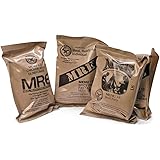- 1. Prioritize Multi-Functional Tools
- 2. Pack Lightweight and Compact Items
- 3. Invest in Quality Emergency Lighting
- 4. Ensure Adequate Food and Water Supplies
- 5. Carry an Emergency First Aid Kit
- 6. Use Communication Devices Effectively
- 7. Prepare for Shelter and Warmth
- 8. Incorporate Solar Charging Solutions
- 9. Keep Important Documents Secure
- 10. Regularly Update and Practice Your Gear Strategies
1. Prioritize Multi-Functional Tools
Choosing Versatile Equipment
In emergency survival gear, versatility is king. Multi-functional tools like Swiss Army knives, multi-tools with pliers, knives, and screwdrivers save space and increase efficiency. For example, a high-quality multi-tool can replace several single-purpose tools, reducing your pack weight and improving accessibility during critical moments.
When selecting these tools, look for durable, corrosion-resistant materials such as stainless steel, ensuring they will withstand tough conditions. In 2025, innovations in materials have improved the longevity and functionality of these items, making them essential for any survival kit.
Real-world scenarios highlight the importance of having multi-purpose gearâwhether opening cans, fixing gear, or building shelter, these tools adapt to a variety of needs, making them invaluable.
Practical Tips for Compact Storage
Organize your multi-tools in accessible compartments, keeping them ready for quick deployment. Consider using a compact survival wristband with integrated knife and fire starter as a handy alternative for super-compact gear options. Regular maintenance, such as lubrication and cleaning, will ensure your multi-tools work perfectly when needed.
Remember, investing in high-quality multi-tools might cost more upfront but offers long-term reliabilityâa crucial factor when every second counts during emergencies.
== > What if ... Get a FREE Subscription to PREPARE
2. Pack Lightweight and Compact Items
The Importance of Minimalism
Every ounce counts when it comes to emergency survival gear. In 2025, advancements in material science have allowed gear manufacturers to produce ultra-lightweight items without sacrificing durability. Prioritizing compact gear ensures you can carry more essential items without being weighed down.
An effective survival kit balances essential items with minimal bulk. For instance, collapsible water bottles, compact sleeping bags, and foldable cookware allow you to pack more efficiently and stay agile, even in compromised terrain or crowded urban environments.
Moreover, lightweight gear enhances mobility, which is vital during evacuations or extended survival situations. With proper planning, you can maintain flexibility and endurance, maximizing your chances of survival.
Practical Packing Strategies
Use organized packing cubes or pouches to separate gear components, making items easy to locate when needed. Regularly review your pack to remove non-essential items and replace outdated gear to keep your survival kit optimized for 2025 standards.
Investing in compact, multi-use gear allows you to prepare effectively without overloading yourself, fostering confidence and readiness in any emergency scenario.
3. Invest in Quality Emergency Lighting
Types of Emergency Lights
Reliable lighting is crucial in emergencies, especially after dark. In 2025, LED technology has significantly advanced, offering long-lasting, energy-efficient options like headlamps, lanterns, and handheld flashlights with smart features.
Solar-powered lights and hand-crank options are sustainable and do not rely on batteries, making them popular choices. For example, high-capacity rechargeable LED lanterns can provide hours of bright light without draining your power sources.
Choosing the right lighting depends on your specific needsâcompact headlamps for hands-free tasks, or brighter lanterns for communal areas and shelters.
Best Practices for Usage and Maintenance
Always carry spare batteries or ensure your rechargeable lights are fully charged. Regularly check and test your emergency lighting gear to ensure optimal performance during an outage.
Proper storage in waterproof and impact-resistant cases protects your lighting equipment from damage, extending lifespan and reliability in tough conditions.
4. Ensure Adequate Food and Water Supplies
Stockpiling Essentials
Food and water are foundational to survival. The general guideline is to have a minimum of three days’ worth of supplies, but planning for a week or more is ideal, especially in unpredictable 2025 scenarios involving natural disasters or civil emergencies.
Pre-packaged high-calorie, non-perishable foods such as energy bars, freeze-dried meals, and water purification tablets are critical components of effective emergency survival gear. These items are lightweight and shelf-stable, making them easy to carry and store.
Don’t forget to include water containers and purification devicesâlike portable filters and UV purifiersâto ensure access to clean drinking water at all times.
Maximizing Shelf Life and Accessibility
Rotate your supplies regularly, checking expiration dates and replacing items as needed. Consider investing in emergency food kits designed for long shelf life, which are optimized for storage and quick access.
Practical water storage solutions include collapsible bottles and purification systems that are easy to pack in your survival kit, ensuring you’re prepared for hydration needs during extended survival situations.
5. Carry an Emergency First Aid Kit
Essentials to Include
A comprehensive first aid kit is indispensable in any survival situation. Key items include bandages, antiseptics, pain relievers, tweezers, and emergency blankets. For 2025, kits are now more customized to meet diverse needs, from minor cuts to more serious injuries.
In addition, include items specific to your personal health conditions, such as allergy medications or speciality supplies, to ensure preparedness for individual needs.
High-quality, compact first aid kits should also contain instructions for basic medical proceduresâvital during stressful circumstances when immediate help isn’t available.
Maintenance and Readiness
Check your first aid kit regularly, replacing expired medications or damaged supplies. Familiarize yourself with basic first aid procedures through training or online resources, so you’re confident applying your gear when needed.
Storing your first aid supplies in a waterproof, sturdy container ensures they remain effective and accessible at all times.
6. Use Communication Devices Effectively
Choosing Reliable Equipment
Staying connected during a crisis is vital. In 2025, satellite phones, two-way radios, and emergency beacon devices have become more advanced and compact. These tools can operate independently of cell networks, which are often compromised during disasters.
For instance, GPS-enabled personal locator beacons (PLBs) can send distress signals and location coordinates to rescue services, greatly enhancing your chances of recovery.
Always select communication devices that are easy to operate under stress, with features tailored to survival situations such as long battery life and water resistance.
Get Preparedness and Self-Reliance Tips. Subscribe Now!Â
Maximizing Communication Readiness
Maintain fully charged devices and carry spare batteries or solar chargers. Practicing regular communication drills ensures you’re familiar with device operation during emergencies.
Coordinate with family or team members beforehand, establishing clear communication plans and protocols to avoid confusion when it matters most.
7. Prepare for Shelter and Warmth
Essential Shelter Materials
A reliable shelter is often overlooked but is critical for protection against the elements. Emergency survival gear should include compact tents, tarps, sleeping bags rated for various temperatures, and insulating blankets.
In 2025, smarter materials like lightweightStratus tents, which are easy to set up and pack, are becoming popular. Also, thermal sleeping mats and layered clothing help retain body heat effectively.
Ensure you understand how to assemble shelter quickly, even in adverse conditions, by regularly practicing setup during training or drills.
Staying Warm and Dry
Layering clothing and carrying moisture-wicking base layers maintain body warmth. Pack extra thermal blankets and emergency heat packs for additional insulation.
Proper shelter and warmth gear can prevent hypothermia and frostbite, especially in cold weather scenarios typical for 2025 emergencies.
8. Incorporate Solar Charging Solutions
Sustainable Power Sources
In the context of 2025 technology, solar chargers have become more efficient, portable, and affordable. These devices can keep your essential electronics, like phones and flashlights, running independent of grid power.
Flexible solar panels and power banks allow for quick recharging in outdoor environments, making them vital components of your emergency survival gear.
Always carry backup power solutions, such as hand-crank chargers, to ensure youâre never left without power during critical moments.
Best Practices for Solar Power Usage
Position solar panels in direct sunlight during the day to maximize efficiency. Store fully charged power banks for nighttime use or low-light situations.
Regularly test your solar charging equipment to verify function, ensuring your device is ready when needed during emergencies.
9. Keep Important Documents Secure
Digital and Physical Storage
In 2025, digital backups of important documentsâsuch as IDs, insurance papers, and medical recordsâare crucial. Use encrypted USB drives or cloud storage solutions for easy access, even if physical copies are damaged.
Physical copies should be stored in waterproof, fireproof containers that are portable and easy to access, providing quick verification in rescue situations or when accessing services.
Make a checklist of essential documents to carry at all times, and review it periodically to keep everything up-to-date and ready to go.
Legal and Personal Preparedness
Ensure loved ones know where to find these documents and how to access digital backups. Establish a secure but accessible storage system, integrating both digital and physical solutions.
Being organized in this way minimizes stress and delays during emergencies, ensuring smoother recovery and assistance processes.
10. Regularly Update and Practice Your Gear Strategies
Continuous Preparedness
In 2025, new threats and technological advances mean that your survival strategies must evolve. Regularly review and upgrade your emergency survival gear to match current standards and best practices.
Practice drills, including setting up shelters, using communication devices, and performing first aid, keep skills sharp. Conducting quarterly reviews ensures your gear remains functional and effective.
By integrating feedback from these exercises, you can identify and address any weaknesses in your kit or procedures, increasing your preparedness level.
Building a Survival Mindset
Practicing your gear strategies helps instill confidence and reduces panic during actual emergencies. Stay educated through courses, tutorials, and expert advice, always aiming to improve your skills.
Remember, being prepared isnât just about gearâitâs about mindset. Consistent updating and training ensure that your emergency survival gear is always ready for 2025 challenges.
Frequently Asked Questions
1. What is the most important item in your emergency survival gear?
While all components are essential, the most critical item varies by scenario. However, a reliable source of clean water is often considered the top priority for survival, as hydration is vital for health and performance.
2. How often should I update my emergency survival gear for 2025?
Itâs recommended to review and update your gear every 6 to 12 months, especially to replace expired items and incorporate new technology or gear improvements relevant for the year 2025.
3. What are some common mistakes with emergency survival gear?
Common mistakes include not regularly testing gear, overpacking with unnecessary items, and neglecting training practice. Proper maintenance, minimalism, and practice are key to effective preparedness.
4. How can I choose the best emergency survival gear in 2025?
Look for gear that combines durability, functionality, and current technological advancements. Read reviews, consult experts, and ensure the gear suits your specific environment and needs.
5. Why is it important to have emergency survival gear?
Having the right emergency survival gear can greatly increase your chances of safety, health, and eventual rescue during unforeseen events. Proper gear provides security, sustenance, and peace of mind.
Conclusion
In summary, an effective strategy involving comprehensive emergency survival gear is essential for facing the unpredictable challenges of 2025. From versatile tools and lightweight packing to advanced lighting and reliable communication devices, each element plays a key role in your preparedness plan. Remember, regularly updating and practicing your gear strategies ensures you stay ready and confident in any scenario. Prioritizing quality, functionality, and ongoing training will help you maximize your chances of survival. By meticulously curating your emergency survival gear today, you position yourself well for tomorrowâs uncertainties, ensuring safety and peace of mind for you and your loved ones.






